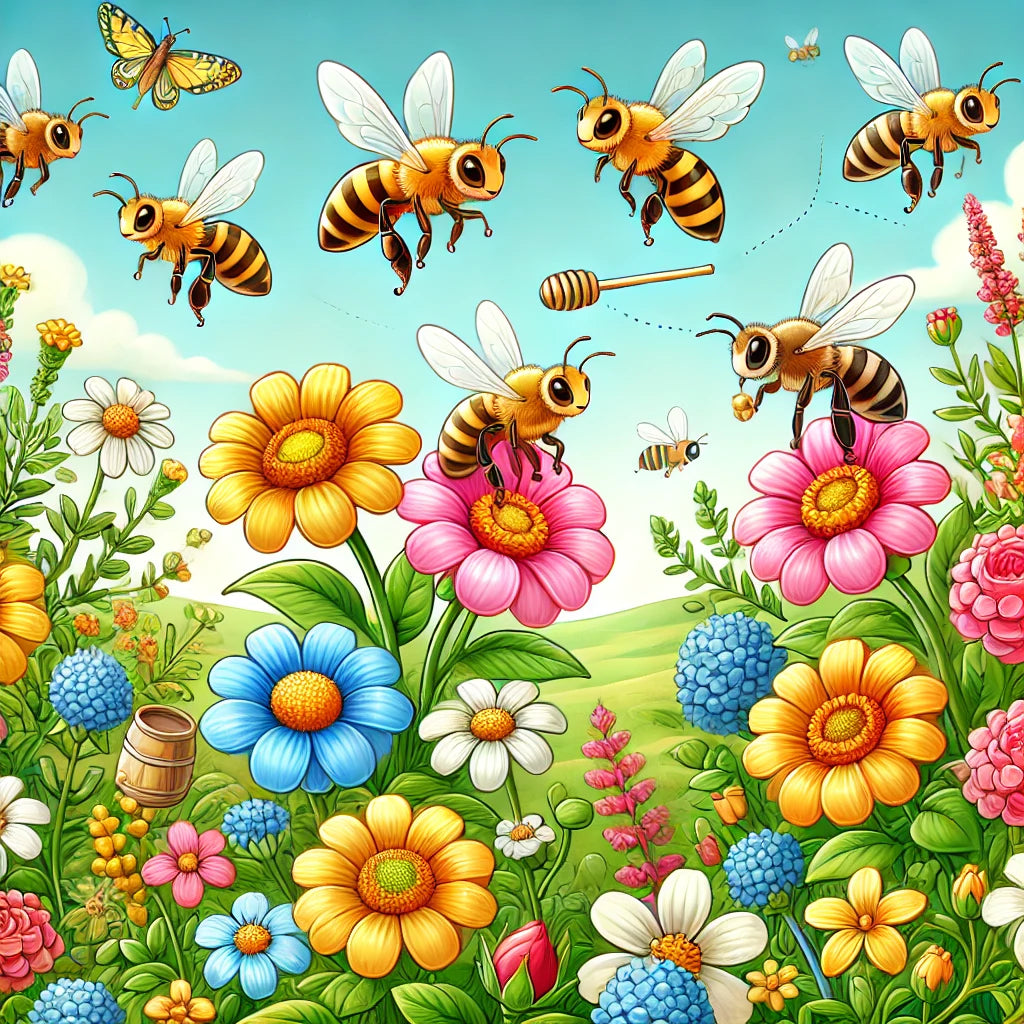Gardening for honey bees isn’t just about having a beautiful space—it’s about creating a thriving ecosystem that supports pollinators. Honey bee gardens can offer critical resources like nectar, pollen, and safe nesting spots for bees. If you’re looking to create a buzzing, pollinator-friendly garden, here are practical tips and insights to help your garden grow while supporting our invaluable honey bees.
Choosing the Right Plants for Your Honey Bee Garden
Selecting the right plants is crucial to creating a welcoming space for honey bees. Nectar-rich and pollen-filled flowers are key to providing the nutrition they need:
- Native Wildflowers: Native plants are naturally adapted to your local climate and support native pollinators.
- Seasonal Bloomers: Choose plants that bloom at different times of the year to ensure bees have a consistent food source.
- Herbs: Lavender, rosemary, and sage are bee favorites and bring pleasant scents to your garden.
By diversifying your plant choices, you not only create a visually vibrant garden but also one that provides bees with essential nutrients year-round.
Creating a Safe and Inviting Bee Habitat
Honey bees need more than flowers—they need shelter and water. Providing these essentials makes your garden a true haven:
- Shelter Options: Simple bee boxes or even hollow stems provide nesting spots for honey bees and other pollinators.
- Water Sources: A shallow dish filled with stones allows bees to safely land and drink.
- Avoid Pesticides: Pesticides can harm bees, so using organic gardening practices is a must for a thriving honey bee garden.
This approach supports bees throughout their life cycle, from foraging to nesting, and promotes a healthy, sustainable environment.
Bee-Friendly Garden Layout
Creating a bee-friendly layout makes a big difference. Here’s how to arrange your garden for maximum bee appeal:
- Cluster Plants Together: Group flowers in clusters to make it easier for bees to forage.
- Add Height with Shrubs and Trees: Bees are attracted to a variety of heights, so include shrubs and flowering trees.
- Use Open and Flat Spaces: Bees prefer open areas where they can easily land on flowers.
- Incorporate Pathways: Clear paths allow easy navigation for bees and keep human foot traffic away from nesting areas.
This strategic layout not only makes for a lovely garden but also a functional space for bee activity.
Using Bee Attractants Wisely
To attract more bees to your garden, consider using natural bee trap attractants like scented oils or attractant plants. Swarm Commander offers products that can help bring more honey bees into your garden in a safe, non-intrusive way. Be sure to place attractants near your flower beds to direct bees to the areas that need pollination the most.
For larger gardens or orchards, attractants can be a powerful tool in promoting high levels of pollination, which benefits both your plants and the honey bee community.
Understanding Why Honey Bees Are Vital to Agriculture
Honey bees play a significant role in agriculture and food production. Here’s why they’re so essential:
- Pollination: Honey bees are some of the most effective pollinators, especially for crops like almonds, apples, and blueberries.
- Economic Impact: Bee pollination contributes billions to agriculture, helping farmers produce high-quality fruits and vegetables.
- Environmental Impact: Pollinated plants feed other animals and support diverse ecosystems, from small gardens to larger landscapes.
Knowing how vital honey bees are to agriculture can inspire us to protect and support these hardworking pollinators in our gardens.
Start Your Bee-Friendly Garden with Swarm Commander
Supporting honey bees in your garden isn’t just beneficial for them—it’s beneficial for us, too. By carefully selecting bee-friendly plants, arranging them in a bee-appealing layout, and using organic practices, you create a space that supports biodiversity and boosts local pollination. Whether you’re planting for beauty or for an eco-friendly purpose, a honey bee garden truly makes your yard come alive.
Ready to create a thriving honey bee garden? Swarm Commander offers tools and attractants that can help draw honey bees to your yard. Transform your garden into a bee sanctuary today!
Frequently Asked Questions About How Garden Grows
Q1. Do honey bees prefer specific flowers in a garden?
Yes, honey bees are attracted to nectar-rich flowers, especially those that are brightly colored and open-faced for easy access.
Q2. How can I make my garden safer for bees?
Avoid using pesticides, provide water sources, and consider adding shelter options like bee boxes to support their needs.
Q3. Are there specific plants that attract more bees?
Herbs like lavender and rosemary, as well as native wildflowers, are highly attractive to bees.
Q4. Can I use attractants to bring more bees to my garden?
Yes, natural attractants like the ones from Swarm Commander can help increase bee activity in targeted areas of your garden.
Q5. Why are honey bees so vital to agriculture?
Honey bees pollinate essential crops, making them crucial for food production and ecosystem health.



